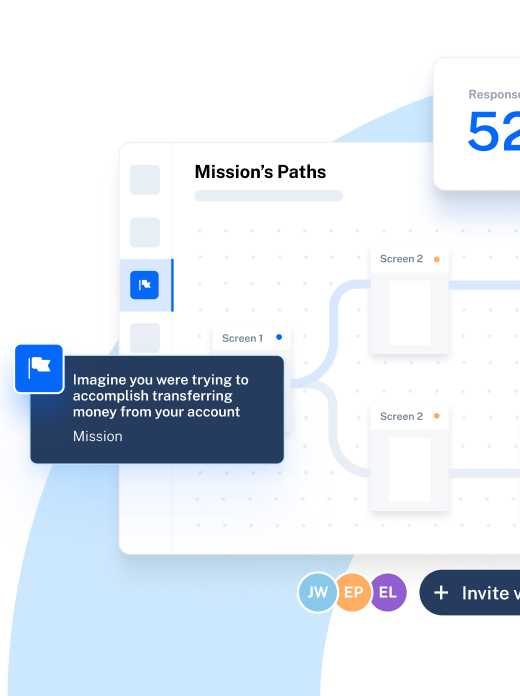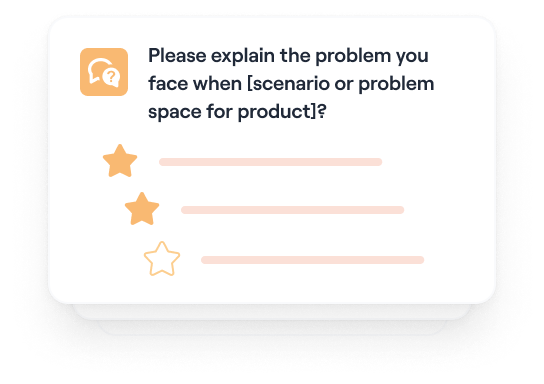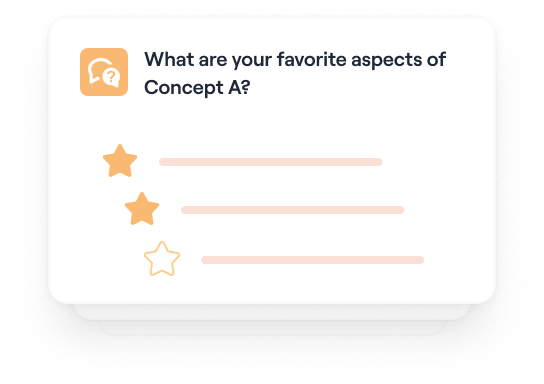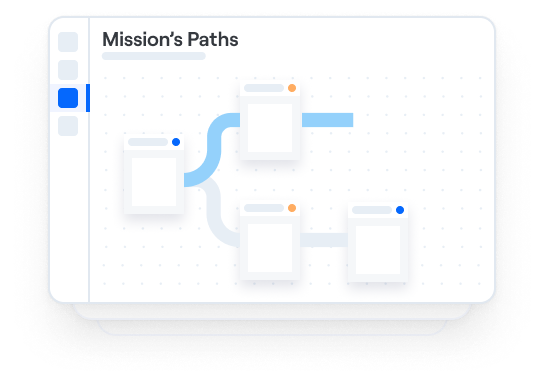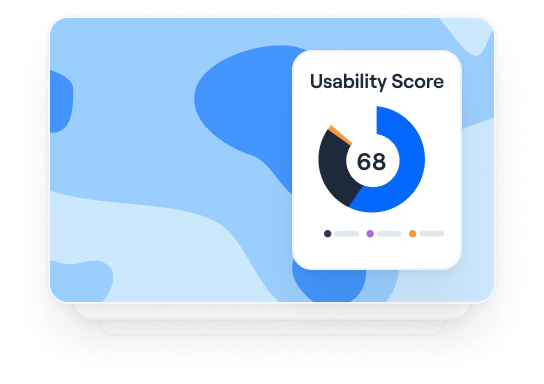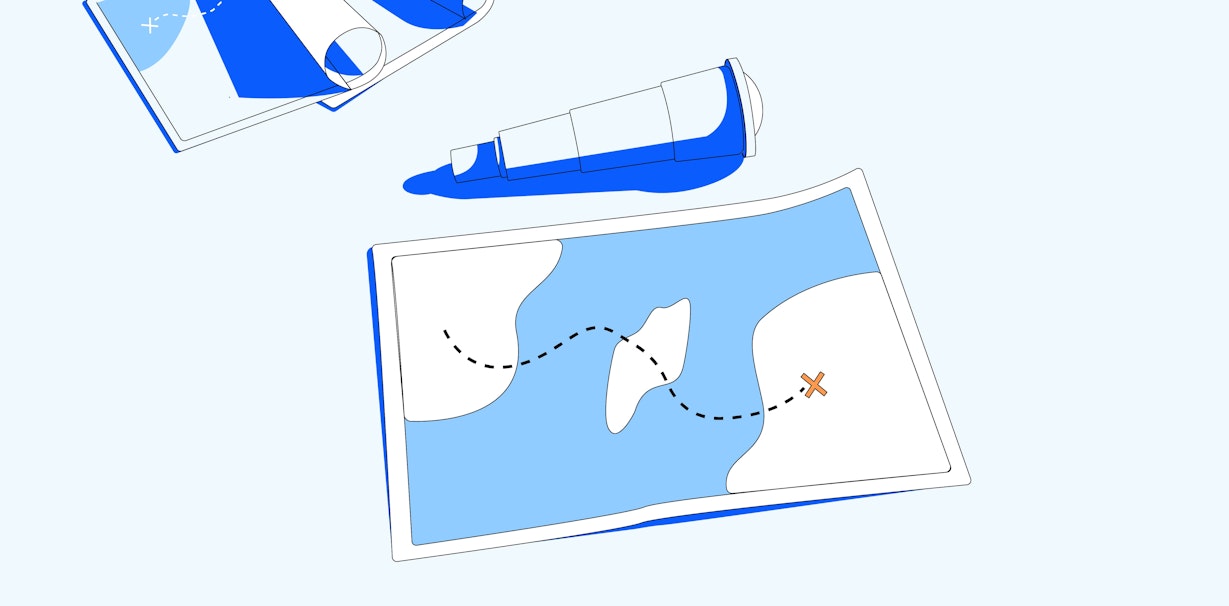
Product Discovery: The Modern Team's Guide to Building Great Products
Product discovery is the very first stage of the product development journey—but it doesn't end there. Discovery doesn’t just guide the way you build your product—it tells you whether you should build one in the first place, and goes on to inform every decision you make. This guide covers the basics of product discovery, with unique insights from real product managers.
Chapter 1
Introduction to product discovery
To explain the idea of product discovery, we can learn a lot from the story of Quibi.
Quibi, a streaming service designed for mobile phones, launched on April 6th, 2020. In a crowded market full of big-name competitors like Netflix, Amazon Prime, and Disney Plus, Quibi differentiated its product by offering high-quality, professionally made TV shows tailored for on-the-go viewing. Each piece of content was 10 minutes or less and optimized for both vertical and horizontal full-screen dimensions.
Because its co-founders were already so successful in both Hollywood and business, Quibi raised almost $2billion prior to launch. They commissioned top talent to create exclusive content. The app itself was well-designed and easy to use. Switching from vertical to horizontal full-screen worked seamlessly, and felt like a genuinely unique feature.
But on October 22nd, 2020, Quibi shut down with hardly any users—just six months after launching. An article by The Verge lists some reasons behind this, from the global pandemic to simply bad content. Above all, the author picks out one factor as decisive: “a lack of insight into consumer behavior, wants, and needs.”
“Quibi didn’t work because no one at Quibi knew what it should be, what people wanted, or how people use their phones. Its entire thesis is wrong.”
In other words, Quibi didn’t fail because of flaws in the final product or bad user experience—it failed as an idea for a product. The way to avoid this? Product discovery.
What is product discovery?
Product discovery is the process of closely understanding what your users’ problems and needs are, then validating your ideas for solutions before starting development. By forming a close relationship with your users and letting them guide your design thinking, your overall product strategy is much more likely to end up solving real-user problems.
Alongside discovery as an initial exploratory stage, continuous product discovery, is a tool, mindset, and way of working that embraces the drive for customer feedback and makes it habitual. Product discovery learnings aren’t just gathered at the beginning of a project—they're collected through continuous communication with customers throughout the entire development lifecycle.
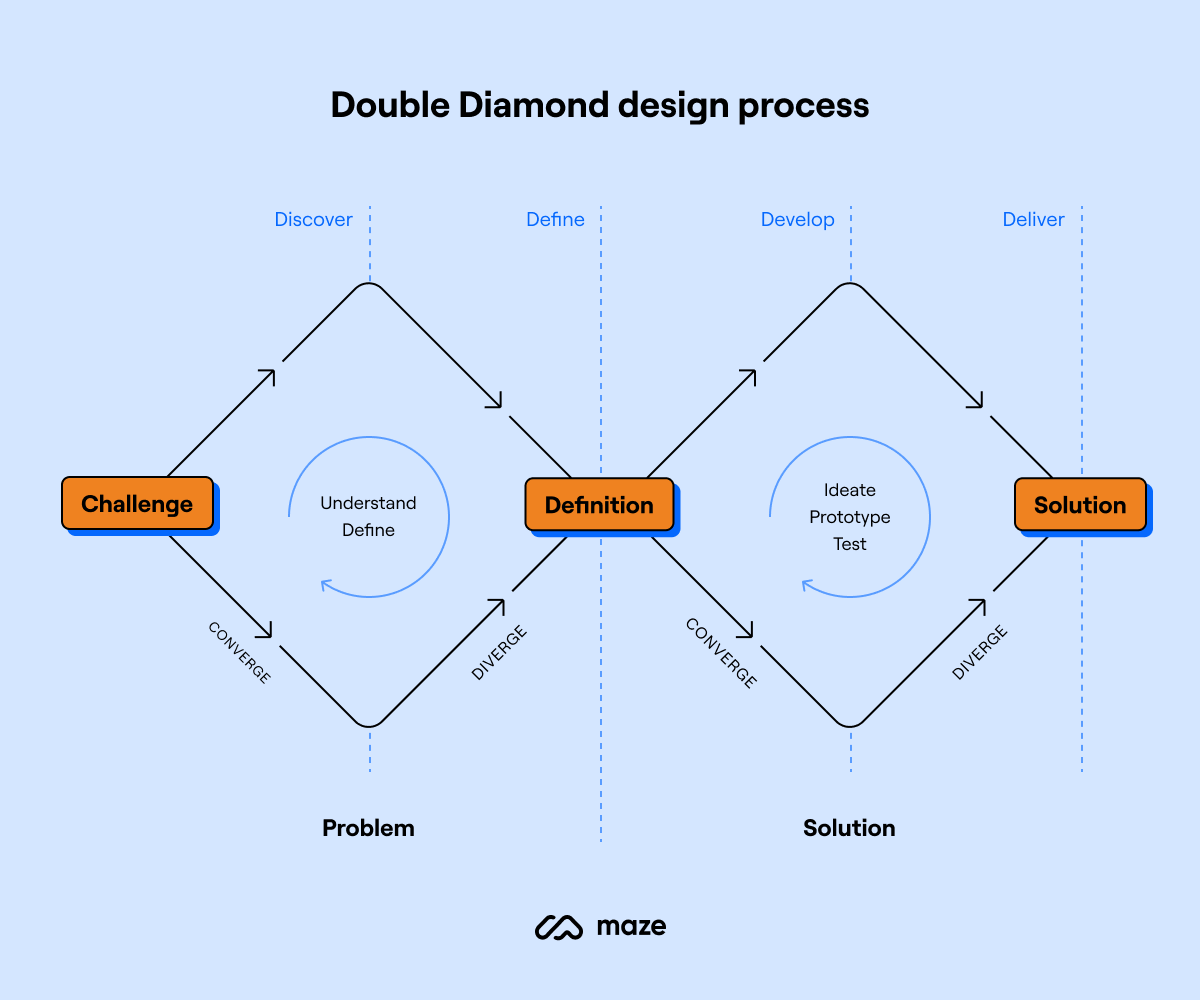
Within the wider design process, product discovery represents understanding and defining your users' problem
Where does product discovery come from: A brief history
According to Marty Cagan, Founder at SVPG, there have always been—and will always be—two key problems in software: figuring out the right product, and building the product right.
The idea of product discovery helps us solve these problems. Originally developed in the 90s, when many of today’s product management best practices were formed, product discovery is about discovering the right product to build. At this time, companies building websites and digital products spent a lot of time and money trying to convince customers that they needed their great products—but not so much time actually listening to what customers wanted.
This led to a lot of very expensive failures, as products often made it to full release before their creators realized that people just didn’t need them. Over time, the development of customer-centric ideas—like the Jobs to be done framework, and early iterative testing based on user feedback—encouraged product teams to put themselves in their users’ shoes more, and to ask what they thought more often.
These days, we refer to this broad template of activities and approaches as ‘product discovery.’
Why is product discovery important?
Product discovery allows designers and researchers to form an intimate understanding of their target user, uncovering their main problems and—in turn—the best potential solutions. It’s a pivotal element of product design and development.
By forming a close relationship with your users and letting them guide your design thinking, your overall product strategy is much more likely to end up solving real-user problems.
Product discovery process: a step-by-step framework
The stages of the product discovery process might be named or split differently, but the overall framework follows a similar trajectory that product teams at most startups use. This makes the process of product discovery something worth internalizing, as it won’t change much from project to project. The time you spend on each stage might vary depending on your exact methodology or overall product strategy, but not the stages themselves.
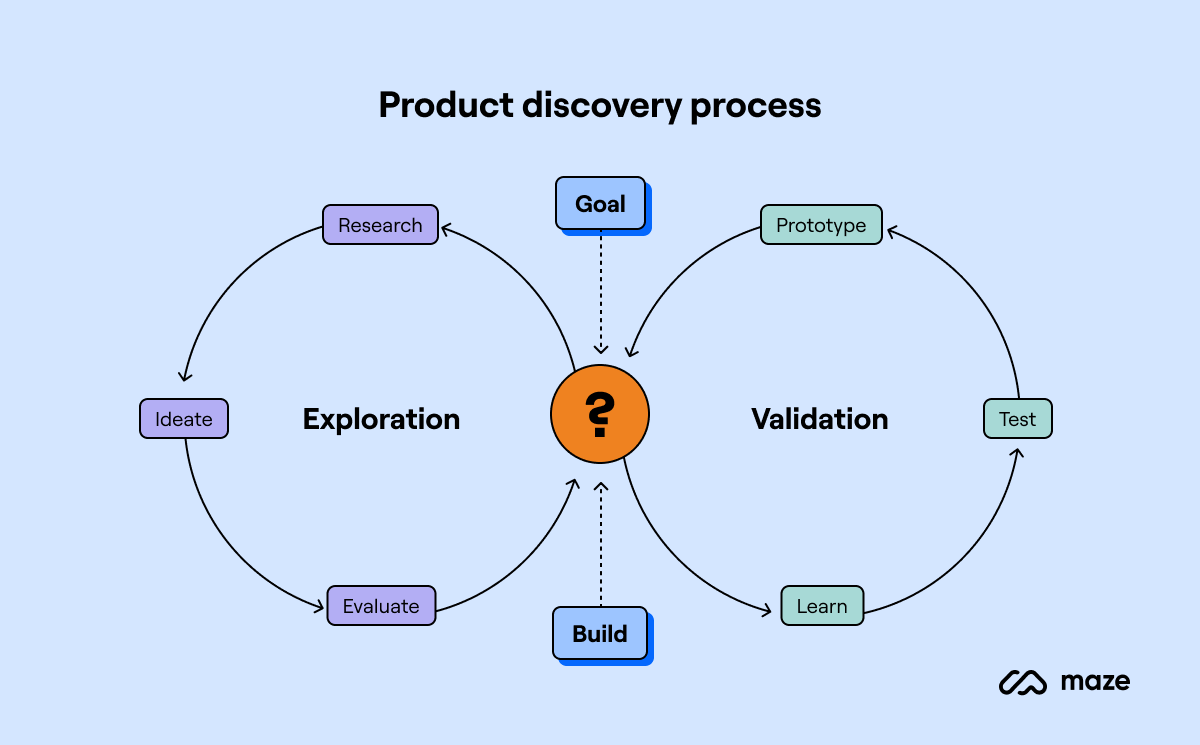
The product discovery process
It's also important to bear in mind that product discovery isn't necessarily a single stage of product development;� continuous product discovery is a tool and ethos used to widen the product discovery stage to an ongoing mindset of regular, consistent feedback, discovery, and iteration—throughout the entire product development lifecycle.
There’s no singular, defined set of discovery activities or methods that you have to follow with product discovery—you could include customer feedback and UX surveys, user interviews, focus groups, journey mapping, insights from product analytics, and various types of usability testing in your approach.
But whatever modern product discovery techniques you end up using, the goals are always the same:
- Form a deep, upfront understanding of what your users need
- Define and validate a solution based on your users’ input
For this reason, it’s vital to approach product discovery with a mindset that’s open to all possibilities. You might start the process with a really cool idea for a product in the back of your mind, only to find out that your users don’t need a new product after all. Maybe a few specific improvements to your existing product are enough. This kind of realization is all part of the ‘discovery’—it’s what makes product discovery both useful and interesting.
And while the exact methodology is up to you, to achieve your product discovery goals you should combine this open mindset with this basic, step-by-step product discovery framework.
1. Learn about users and understand their needs
When embarking on a new round of product discovery, your first job is to immerse yourself in the world of your user. The goal at this stage is to absorb as much information about your users’ needs and pain points as you can until clear patterns start to emerge.
Before you start thinking about what's next on your product roadmap or even decide which problem you want to solve, spend a decent amount of time communicating with users. Instead of focusing on a specific product or feature idea, think about the broader problem (or group of problems) that your idea is aiming to solve, and use this to inform your user research. Run customer interviews, organize user stories into themes, create journey maps, and form a close relationship with a group of users.
The user insights you collect here will help you hone in on customer needs and pain points to build solutions for. You could spend weeks or months in this stage—however long it takes to start spotting clear themes in your users’ feedback.
This stage is also a good time to do some market research. Analyzing the competitive landscape is another great way to reveal new product opportunities. For more on this and other ideas for methods you can use, check out the chapter on product discovery techniques.
2. Define direction and decide on priorities
Once you’ve got a healthy amount of data and feedback, your team should take a step back and prioritize the most important problems for your users. After a while, patterns should start to emerge from your research. One or two problems will start to come up again and again in different user stories. Once you’ve identified roughly what these are, the next step is to refine them into hypotheses and choose one to build your new product or feature around.
With problems prioritized, you should be able to form a clear, broad hypothesis that can form the foundation of the solutions you develop. This should be a short, simple sentence—often a question—that covers the main problem and related sub-problems you want to solve for your users. Here’s an example:
“Building a commenting feature will increase the amount of time users spend in our product.”
This sounds straightforward, but it will probably take you a few attempts. Take your time—it’s super important to get this part right, as your hypothesis will determine what you build.
3. Ideate solutions and prioritize development initiatives
The first two stages of the product discovery process are all about understanding the problem. Now it’s time to start solving it.
It’s time to get creative and start thinking about what a new product idea might look like. Encourage your team to brainstorm without limits at first, then gradually narrow down to the best ideas. You could even do an ideation hackathon to get the whole team focused on the problem.
Sebastien Phlix, Product Manager at N26 lists five filters as a template to help figure out the ideas worth putting time into:
- Does it align with your business goals? If an idea won’t positively impact the metrics or company goals that your team is currently focusing on, discard it for now.
- Is it relevant to your target audience or potential users? You should be able to easily answer this with your research from stages one and two.
- Do the numbers add up? Do a quick calculation to determine exactly which metric you expect the idea to impact, and estimate by how much. This helps compare ideas that solve a problem in different ways.
- Are people asking for it? If customers or stakeholders are requesting a similar idea directly, this is useful data to take into account.
- Would it be stupid not to do it? Sebastien often asks his team this question and says it yields interesting answers: “Pay attention to the thinking process and how they arrived at their conclusion. Asking this question has surfaced promising ideas that we’ve researched and later released.”
Once you’ve narrowed your ideas down to a shortlist, you can use a prioritization framework to assign scores for predicted value and feasibility, as a way to assess the viability of each.
4. Create prototypes and test with your users
The final stage for this round of product discovery means it’s time to create a mockup or MVP (Minimum Viable Product) and get some customer feedback on it. While the previous stage is important to narrow down the solutions worth building, this doesn’t mean they’ve been validated. The only people who can definitively show you whether an idea is valuable enough to progress to product delivery are your users.
This stage of the process typically circles through itself several times, allowing you to test multiple iterations and concepts.

The Maze product development process
With your prototype done, now’s the time to reach out to users again. Run some prototype tests and collect customer insights and feedback to find out if you're building the right product. If your users’ responses validate your hypothesis and early iteration, you’re ready to start development. If not, keep tweaking your prototypes until you’re confident that the solution you’re proposing is really what your users are looking for.
For in-depth advice and step-by-step guides on testing with prototypes, check out some of our dedicated articles on these topics:
- Rapid prototyping: Benefits, processes, and best practices
- Prototype testing: How to nail your next product launch
- Remote usability testing: When to do it and how to create an effective test
- Concept testing: How to move forward with the right ideas
The benefits of product discovery
Like many best practices of modern product development, a lot of the product discovery process seems like common sense. But as the fall of Quibi shows, the benefits of investing time into product discovery are still often overlooked to this day. So let’s take a look at some of the main ones:
You’ll save time & money
Product teams spending weeks or months doing a lot of thinking and not very much building might seem counterintuitive to the fast startup culture they exist in. The demands of key stakeholders to drive metrics and business goals by shipping new products is a constant pressure for most product teams.
But cutting corners with user research to press on with development is a massive—and very expensive—risk. You’re essentially gambling on assumptions about what your users want from the product experience, which could turn out to be false no matter how experienced you are. Product discovery gives you validation on whether your product needs to exist before spending a lot of money building, polishing, and marketing it. It makes you more agile, not less.
Sebastien Phlix, Product Manager at N26, sums it up:
Think about how much one two-week sprint costs. 10k? 20K? Product discovery is important because engineering and design time is the most precious asset a company has.

Sebastien Phlix, Product Manager at N26
Your products will be more innovative
By incorporating customer viewpoints from the beginning, product discovery inspires your team to challenge their own assumptions and think outside of the box when making product decisions. This doesn’t just lead to more innovative solutions—it also validates the product-market fit of your ideas and initiatives.
Freddie Beesely, VP of Product at Attest, sees innovation as the true value of product discovery:
Product discovery helps you expand within your market, move into new ones, stay ahead of the competition, and adapt to changing trends. Without discovery, products tend to stagnate by getting stuck focusing on the short-term.

Freddie Beesely, VP of Product at Attest
Your product designers and development team will thank you
Product discovery gives you a good idea of whether your new product or feature will be used. And for product designers and developers, seeing their creations help thousands or even millions of people is one of the best parts of the job. Without product discovery, your team members won’t get the feedback they crave.
Fadeelah Al-horaibi, Senior Product Manager at Slite, knows the feeling:
I've unfortunately been in an environment where product discovery was skipped. No-one was talking about the customer or business opportunities—just product delivery. The scariest part is that once the delivery took place, we were straight on to the next.

Fadeelah Al-horaibi, Senior Product Manager at Slite
Pivoting late in the development process—or worse, releasing a feature that no one uses—just doesn’t feel good. In many ways, the product development process is all about failing and learning. But without staying close to your customers, it’s hard to even know whether your team succeeded or not.
Final notes
Before Quibi, co-founder Jeff Katzenberg was CEO of Dreamworks Animation. On his watch, the company created an incredible run of unlikely hit movies, including Shrek, Kung Fu Panda, and How To Train A Dragon. His ability to make films that kids loved led him to claim that he “knows millennials better than millennials.”
Ultimately, product discovery is there to protect you from making costly mistakes due to following false assumptions like these. As Marc Davies, Product Lead at Oliva, says:
Product discovery is important because it's too easy to build the wrong thing which your ego thought was the right thing.

Marc Davies, Product Lead at Oliva
For some deeper dives into topics related to product discovery, check out the next chapters of this guide.
Frequently asked questions about product discovery
What is product discovery?
What is product discovery?
Product discovery is the process of researching to understand your users’ problems and needs, then validating your solutions before beginning development. By working closely with real users in this stage, your final product is more likely to solve user challenges.
What are the phases of product discovery?
What are the phases of product discovery?
There are four phases of product discovery:
- Learn & understand
- Define & decide
- Ideate & prioritize
- Prototype & test
Why do we need product discovery?
Why do we need product discovery?
Product discovery is a key stage in product design, as it gives you deep insight into user pain points and preferences, which in turn impacts your proposed solution and its success.
